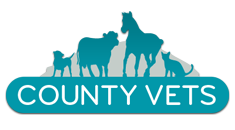Stallions can be difficult to manage unless your yard is specially equipped deal with them so most are castrated to prevent the unwanted behaviour that is associated with sexually mature, entire animals. Castration is a common procedure but it is not without complications which are usually exempt from cover by insurance, so think carefully before purchasing a colt.
Most colts are castrated at a young age but sometimes older stallions undergo the procedure. Sexually active males that are castrated will usually retain stallion like behaviour following surgery.
We aim to castrate most animals in the spring or autumn to avoid the complications associated with flies and mud.
All castrations in this practice are done under general anaesthesia. Anaesthesia always carries a risk in equines and though this is relatively low in young fit animals the possibility of complications (potentially fatal) is still present and should be appreciated. Please inform your insurance company prior to the date of surgery.
Requirements for castrations:
- We prefer to do our castrations outside, weather permitting. A small, clean grass paddock or all-weather arena is ideal. If the weather is wet or windy, a large loose-box with a deep (preferably straw) bed will be required.
- The patient should have nothing to eat for 12 hours prior to surgery. Access to water should be allowed until 2 hours before.
- A confident handler who may be asked to assist should be available.
A consent form will need to be signed before the procedure can go ahead.
It is important that animals are able to be walked out following surgery so a clean area must be available for this and the animal should be trained to walk in a halter, this should be done at least twice a day. Training is particularly important in donkeys that often are not halter trained.
Colts should be stabled for a few hours immediately post castration to monitor for excessive haemorrhage or anything coming through the incisions. Some bleeding is to be expected after castration but you should be able to count the drops of blood and it should only last for a few hours. The scrotum will usually swell to a certain degree but should remain non-painful and there should be minimal discharge. If anything is protruding from the wound please phone and speak to a vet immediately. Your horse should be bright and willing to move around freely at all times. If you are in any doubt please phone for advice.
If everything appears to be normal the day after surgery then the animal is usually best turned out to exercise. This will help reduce the post-operative swelling.
We will advise you on any further medication your horse may need over the days following the procedure.


